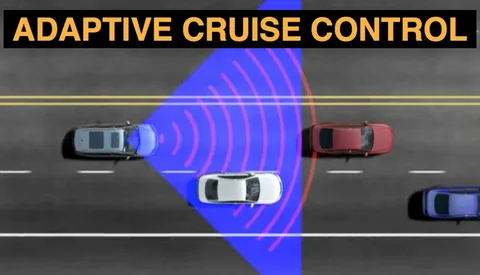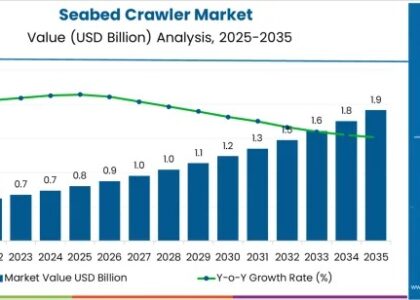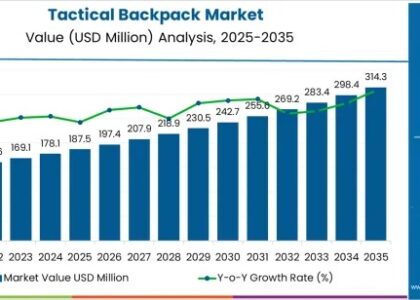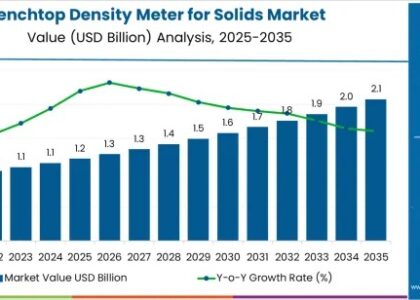The global adaptive cruise control (ACC) market is projected to grow from USD 5.2 billion in 2025 to USD 16.91 billion by 2035, registering a strong CAGR of 12.5% over the forecast period. This acceleration in growth is being driven by rising integration of advanced driver-assistance systems (ADAS) in both passenger and commercial vehicles, as automakers prioritize safety, automation, and driver comfort.
As vehicles evolve from mechanical machines into intelligent mobility platforms, the way we interact with driving is undergoing a profound transformation. While flashy infotainment systems and self-parking features often grab headlines, one quietly transformative technology has been redefining the modern driving experience—adaptive cruise control (ACC). Seamlessly blending automation with safety, ACC has become a pivotal step in the journey toward full autonomy.
It doesn’t talk, flash, or impress at first glance. But in real-world traffic, on long drives or during rush-hour crawls, adaptive cruise control becomes the steady hand on the wheel—constantly adjusting, measuring, and protecting. It’s not just a convenience; it’s a foundation for the autonomous vehicles of tomorrow.
Get Ahead with Our Report: Request Your Sample Now!
https://www.futuremarketinsights.com/reports/sample/rep-gb-14545
Beyond Speed Holding: Intelligence in Following Distance
Traditional cruise control was binary—set a speed, hold it, and disengage if anything changed. Adaptive cruise control reimagines that simplicity by layering in radar, LiDAR, and camera-based sensing to monitor the distance and speed of vehicles ahead. It doesn’t just keep a car moving; it keeps it moving smartly.
Whether navigating highway traffic or urban congestion, ACC systems can automatically accelerate, decelerate, and maintain safe following distances. In newer implementations, some systems can even bring vehicles to a complete stop and resume when traffic clears—all without driver input. It’s no longer just about maintaining speed—it’s about maintaining awareness.
Overshadowed by Autonomy, Built for Autonomy
While headlines buzz about full self-driving systems and robotaxis, adaptive cruise control quietly forms the operational core of these technologies. It is one of the most mature and widely adopted semi-autonomous systems on the road today, bridging the gap between manual driving and hands-free autonomy.
ACC is often bundled with other advanced driver-assistance systems (ADAS), such as lane centering and automatic emergency braking, forming the base of Level 2 autonomy. As the automotive industry gradually ascends the levels of automation, adaptive cruise control stands as a vital steppingstone—already trusted, proven, and continuously evolving.

Real-Time Traffic, Real-Time Decisions
In the modern driving environment, conditions change rapidly. From sudden slowdowns to cut-ins from adjacent lanes, ACC systems must process real-time data and react instantly. This requires seamless integration with onboard sensors, control units, and vehicle dynamics.
Advanced ACC systems use predictive algorithms and even cloud-based data to anticipate traffic patterns and adjust accordingly. Some even learn driver preferences over time, adapting following distance or acceleration smoothness to match individual comfort levels. This evolution is turning passive systems into active collaborators in the driving process.
A New Arena for Sensor and Software Synergy
The development of adaptive cruise control has become a proving ground for sensor fusion and intelligent software integration. It’s no longer just about adding radar modules—it’s about how well the vehicle’s brain interprets and reacts to multi-modal data from the environment.
OEMs and Tier-1 suppliers are now investing heavily in developing robust sensor architectures and AI-enhanced perception algorithms. The challenge isn’t just achieving functionality—it’s achieving confidence. Drivers need to trust that their vehicle will behave safely and predictably in a wide range of real-world scenarios.
Exhaustive Market Report: A Complete Study
https://www.futuremarketinsights.com/reports/adaptive-cruise-control-market
Tied to Safety, Comfort, and Autonomy
Adaptive cruise control doesn’t just reduce fatigue—it actively contributes to safety. By reducing rear-end collisions, moderating speed variation, and encouraging smoother driving patterns, ACC is helping to shape a safer road environment. For long-distance drivers, it transforms tedious commutes into manageable journeys.
It also enhances fuel efficiency and battery optimization in electric vehicles, as smoother speed modulation reduces energy waste. And in fleet vehicles and commercial applications, ACC plays a role in reducing driver stress and improving logistics consistency.
The Quiet Co-Pilot of Modern Driving
For many drivers, ACC is the first taste of autonomous functionality. It doesn’t demand attention or flash futuristic credentials—it just works, quietly and reliably. And in doing so, it builds trust in the idea of giving some control to the machine.
Ignore its presence, and you miss the steady foundation that underpins the future of autonomy. Embrace it, and you realize that the road to self-driving cars isn’t paved in sudden leaps—it’s built in layers of technology like adaptive cruise control, working invisibly, mile after mile.
As the automotive world moves toward intelligent, connected, and self-directed mobility, ACC stands as proof that automation isn’t just coming—it’s already here, quietly steering from behind the wheel.






